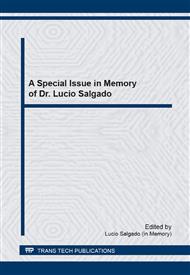p.525
p.530
p.536
p.541
p.547
p.553
p.558
p.564
p.570
Comparison of Firing of the a Mass for Ceramic Tiles in Laboratory and Industrial Furnace
Abstract:
The present study aims to examine the differences obtained in the technological properties of a ceramic formulation for tile after firing in two different environments, laboratory furnace and industrial furnace. For this, the ceramic formulation used in the production of semi-porous ceramic tile was characterized. Chemical, mineralogical and thermal analyses in the ceramic formulation were performed. The specimens were obtained by compacting and fired at maximum temperature of 1140 o C in laboratory and industrial furnaces. The technological tests performed were linear shrinkage, water absorption, bulk density and mechanical strength. Microstructure was assessed through X-ray diffraction analysis and scanning electron microscopy. The results showed that the different furnaces provided significant differences in the specimens analyzed such as higher mechanical strength and lower water absorption in samples fired in laboratory furnace, for example.
Info:
Periodical:
Pages:
547-552
Citation:
Online since:
September 2014
Authors:
Price:
Сopyright:
© 2015 Trans Tech Publications Ltd. All Rights Reserved
Share:
Citation:


